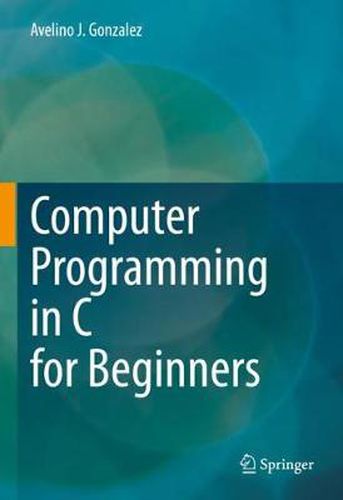Readings Newsletter
Become a Readings Member to make your shopping experience even easier.
Sign in or sign up for free!
You’re not far away from qualifying for FREE standard shipping within Australia
You’ve qualified for FREE standard shipping within Australia
The cart is loading…






This title is printed to order. This book may have been self-published. If so, we cannot guarantee the quality of the content. In the main most books will have gone through the editing process however some may not. We therefore suggest that you be aware of this before ordering this book. If in doubt check either the author or publisher’s details as we are unable to accept any returns unless they are faulty. Please contact us if you have any questions.
This textbook is an ideal introduction in college courses or self-study for learning computer programming using the C language. Written for those with minimal or no programming experience, Computer Programming in C for Beginners offers a heavily guided, hands-on approach that enables the reader to quickly start programming, and then progresses to cover the major concepts of C programming that are critical for an early stage programmer to know and understand. While the progression of topics is conventional, their treatment is innovative and designed for rapid understanding of the many concepts in C that have traditionally proven difficult for beginners, such as variable typing and scope, function definition, passing by value, pointers, passing by reference, arrays, structures, basic memory management, dynamic memory allocation, and linked lists, as well as an introductory treatment of searching and sorting algorithms.
Written in an informal but clear narrative, the book uses extensive examples throughout and provides detailed guidance on how to write the C code to achieve the objectives of the example problems. Derived from the author’s many years of teaching hands-on college courses, it encourages the reader to follow along by programming the progressively more complex exercise programs presented. In some sections, errors are purposely inserted into the code to teach the reader about the common pitfalls of programming in general, and the C language in particular.
$9.00 standard shipping within Australia
FREE standard shipping within Australia for orders over $100.00
Express & International shipping calculated at checkout
This title is printed to order. This book may have been self-published. If so, we cannot guarantee the quality of the content. In the main most books will have gone through the editing process however some may not. We therefore suggest that you be aware of this before ordering this book. If in doubt check either the author or publisher’s details as we are unable to accept any returns unless they are faulty. Please contact us if you have any questions.
This textbook is an ideal introduction in college courses or self-study for learning computer programming using the C language. Written for those with minimal or no programming experience, Computer Programming in C for Beginners offers a heavily guided, hands-on approach that enables the reader to quickly start programming, and then progresses to cover the major concepts of C programming that are critical for an early stage programmer to know and understand. While the progression of topics is conventional, their treatment is innovative and designed for rapid understanding of the many concepts in C that have traditionally proven difficult for beginners, such as variable typing and scope, function definition, passing by value, pointers, passing by reference, arrays, structures, basic memory management, dynamic memory allocation, and linked lists, as well as an introductory treatment of searching and sorting algorithms.
Written in an informal but clear narrative, the book uses extensive examples throughout and provides detailed guidance on how to write the C code to achieve the objectives of the example problems. Derived from the author’s many years of teaching hands-on college courses, it encourages the reader to follow along by programming the progressively more complex exercise programs presented. In some sections, errors are purposely inserted into the code to teach the reader about the common pitfalls of programming in general, and the C language in particular.